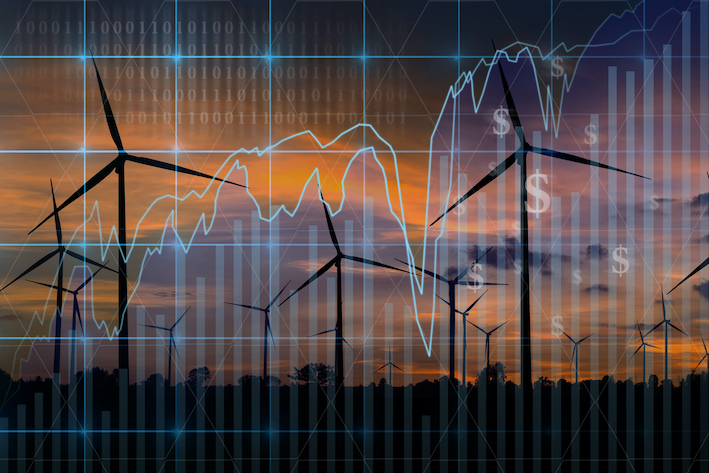Green Tiger Markets: Locking in future power prices now
- January 7, 2022
- 0

Whenever there’s a shortage in electricity supply, just like the Luzon Red Alerts or the Malampaya gas restrictions, the next thing most power industry players and watchers look at is the Wholesale Electricity Spot Market (WESM), specifically its high prices. High, because in the current configuration, power is bought right at the moment it’s needed.
Simply put, it’s a matter of basic economics: high demand + low supply = high prices. All of which ends in spikes in consumers’ electric bills.
The inability to meet demand also results in power outages. Things are expected to get worse given the Department of Energy’s (DOE) increased demand projections due to economic growth. According to the department, Luzon will be needing 24,385 megawatts of additional capacity by 2040.
Along with the rest of the world, the Philippines is making the shift to renewable energy (RE).
The proposed National Renewable Energy Program is setting a target of 35% share of renewable energy (RE) in the power generation mix by 2030 and 50% share by 2040.
The past three years has shown a steady rise in the use of RE in Philippine households, particularly biomass. This was due to the COVID-19 pandemic and the government’s quarantine restrictions that brought about zero mobility for its citizens. Perhaps unsurprisingly, renewables accounted for 20.8% of the Philippines’ power mix at the end of 2019. The recent easing of restrictions has created advantageous movement in the country’s economy, even as energy demand soared.
Enter Green Tiger Markets (GTM).
The Philippines has recently seen a growing portfolio of investments in the power sector. While many are increasingly focused on RE and liquefied natural gas, there still are a few coming in for coal, particularly for projects already committed before the DOE issued its coal plant moratorium in late 2020.
In June 2021, WESM shifted from the one-hour interval to the five-minute trading in the Luzon and Visayas grids. This means there will only be a five-minute dispatch and settlement interval compared to the previous one-hour interval. But this instantaneous market might pose issues within the country’s energy sector because it may result in even higher price volatility.
With the issues that the energy sector constantly faces in the electricity market, a new derivative marketplace platform developed and operated by GTM can be beneficial for market participants.
“What GTM does is it bridges the gap between what’s going on in the spot market, which is effectively instantaneous transactions, to the long term contracting market where you have these ten or 20-year power deals that are take or pay, typically for baseload power,” GTM CEO John Knorring tells Power Philippines.
The platform also facilitates the forward hedging of price on a financial basis, which allows participants to buy and sell forward contracts to other participants who have opposing price risk management needs. When traders hedge their price risk exposure, this can result in benefits to end-users through a more efficiently managed electricity supply and less volatile prices.
Despite the unique trading process in the spot market, the long-term price signals would help power firms create decisions to build generation.
In GTM’s platform, three diverse contracts can be used to match power firms’ consumption risk or generation risk that they have.
“Any firm or stakeholder that has exposure to the price of electricity — we want to make it easier for them to hedge their price and reduce the uncertainty that they are facing and simplify the negotiations for transacting in the electricity market,” Knorring emphasized.
GTM’s and WESM’s platforms may have similarities, but the spot market doesn’t have a hedging platform wherein participants have the option to hedge on a forward basis whether it be tomorrow, next week, next month, or next year. Nonetheless, both have the same goal: decrease power prices.
WESM functions under Republic Act 9136 or the Electric Power Industry Reform Act (EPIRA) to promote competition, encourage market development, ensure consumer choice, and penalize abuse of market power in the restructured electricity industry.
Meanwhile, GTM’s platform is a step forward from the spot market by EPIRA, because it could essentially lower down the price since it protects firms from sudden shocks of high prices.
GTM’s platform is aligned with other legislative goals, such as the competitive selection process which aims to increase competition, contracting, and bring transparency to pricing.
With the hundreds of diverse participants in the WESM, Knorring emphasized that firms will need to have a versatile trading platform that would match their needs.
“There’s not really any better way to bring transparency than to drive all the major market participants to one location for contracting,” Knorring said.
Additionally, this forward market can help with investments that lead to economic growth as the Philippines emerge from the challenges of the pandemic.
“If they don’t know the price of the electricity, it’s much harder for them to make a decision to make an investment. And those industries, whether it be construction or offices, anything we can do to remove the uncertainty there or allow for firms to remove their uncertainty is [going to] help that economic growth,” Knorring said.
In March 2021, GTM launched its pilot for its derivative platform in the Philippines. It is part of GTM’s mission to support the growth and development of underserved markets through transparency and price discovery.